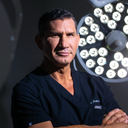Posted underAsian Rhinoplasty q&a
What Material is Used in Asian Rhinoplasty Nasal Tip Surgery?
How is a more prominent nasal tip constructed on a flat nose? What is the implant is made of? Can it be made from the tissue of the patient?
Answers (7)
From board-certified doctors and trusted medical professionals
Dr. Philip J. Miller, MD, FACS

Dr. Philip J. Miller, MD, FACS
Board Certified Facial Plastic Surgeon
Answer
Dr. Charles S. Lee, MD, FACS

Dr. Charles S. Lee, MD, FACS
Board Certified Plastic Surgeon
Answer
Dr. Toby Mayer, MD

Dr. Toby Mayer, MD
Board Certified Facial Plastic Surgeon
Answer
Dr. Kimberly Lee, MD
Dr. Kimberly Lee, MD
Facial Plastic Surgeon, Board Certified in Otolaryngology – Head and Neck Surgery
Answer
Dr. Suzanne Kim Doud Galli, MD, PhD, FACS
Dr. Suzanne Kim Doud Galli, MD, PhD, FACS
Board Certified Facial Plastic Surgeon
Answer
Dr. Richard W. Fleming, MD (retired)
Dr. Richard W. Fleming, MD (retired)
Board Certified Facial Plastic Surgeon
Answer
Dr. Francis R. Palmer, III, MD (retired)
Dr. Francis R. Palmer, III, MD (retired)
Board Certified Facial Plastic Surgeon
Answer
More Asian Rhinoplasty Questions
See all Asian Rhinoplasty Q&AWE SEND PRETTY
EMAILS
What’s trending? Who’s turning heads? Which TikTok myths need busting? We’ve got you. No fluff, no gatekeeping—just real talk. Get our free, unfiltered newsletter.